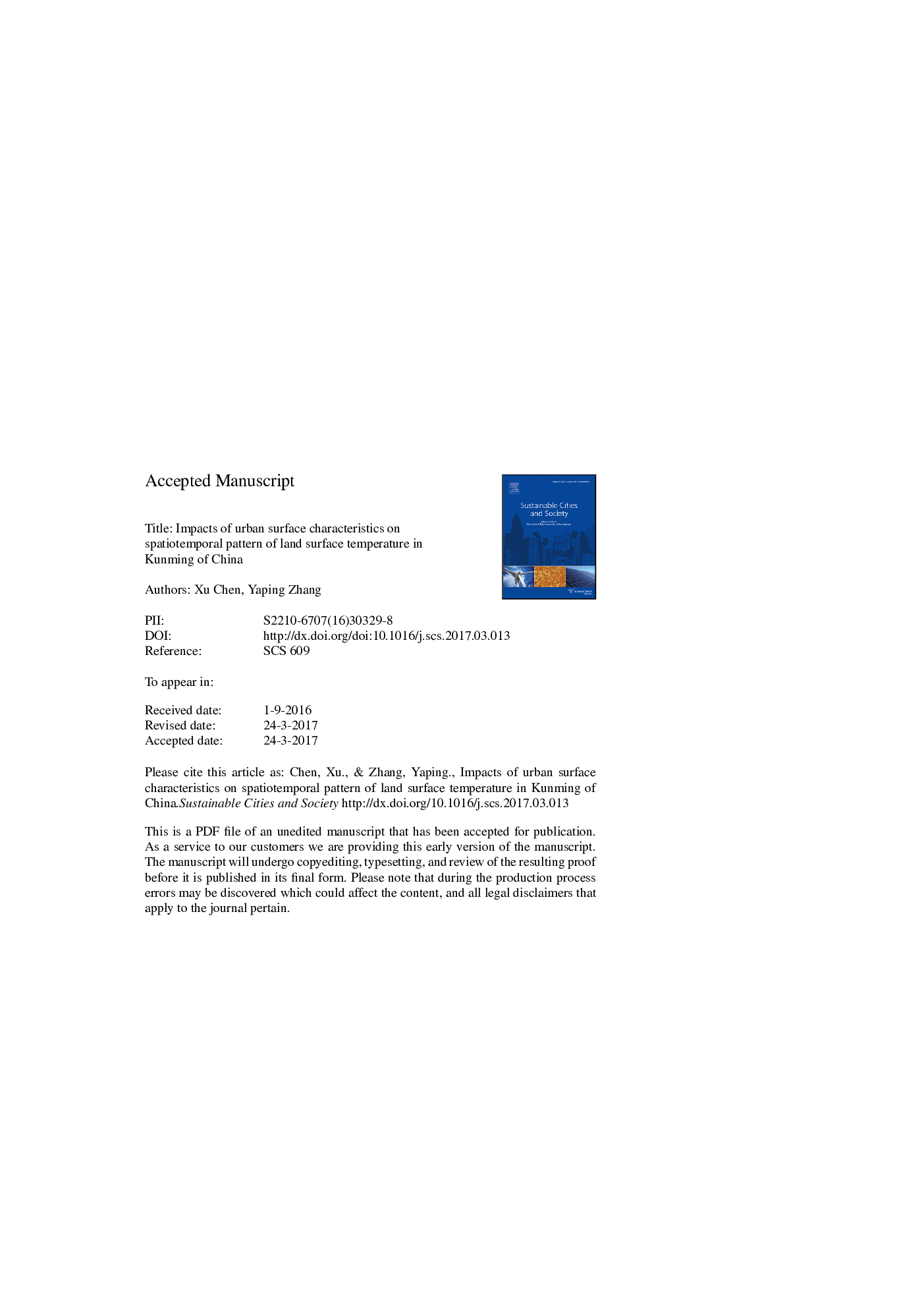| Article ID | Journal | Published Year | Pages | File Type |
|---|---|---|---|---|
| 4927996 | Sustainable Cities and Society | 2017 | 20 Pages |
Abstract
To explore impacts of urban surface characteristics on spatiotemporal pattern of land surface temperature (LST), LST was retrieved from the thermal infrared band of satellite images and five indices were selected and extracted from remote sensing images in different time periods respectively acquired from 1992 to 2014. The correlation analysis (pixel by pixel) and linear regression analysis showed that although Normalized Difference Built-up Index (NDBI) and LST had the highest correlation coefficient, a combination of Modified Normalized Difference Water Index (MNDWI) and Normalized Difference Vegetation Index (NDVI) yielded the best regression results (the mean of R-squared value increased 0.1). These results showed that both NDBI and NDVI-MNDWI would be acceptable indicators of LST, but NDVI-MNDWI could be better. Moreover, urban heat island (UHI) intensity (represented by LST) analysis showed that the highest UHI intensity appeared in the April, while the lowest UHI intensity index emerged in June. These results suggested that both UHI intensity and UHI intensity index might be closely related to land surface moisture. Furthermore, the regions of UHI intensity index greater than 0.5 were unchanged essentially from 2000 to 2014. So, these regions would be considered as key areas where the UHI could be focused on elimination.
Related Topics
Physical Sciences and Engineering
Energy
Renewable Energy, Sustainability and the Environment
Authors
Xu Chen, Yaping Zhang,
